Foods allowed, foods to check, & foods to avoid
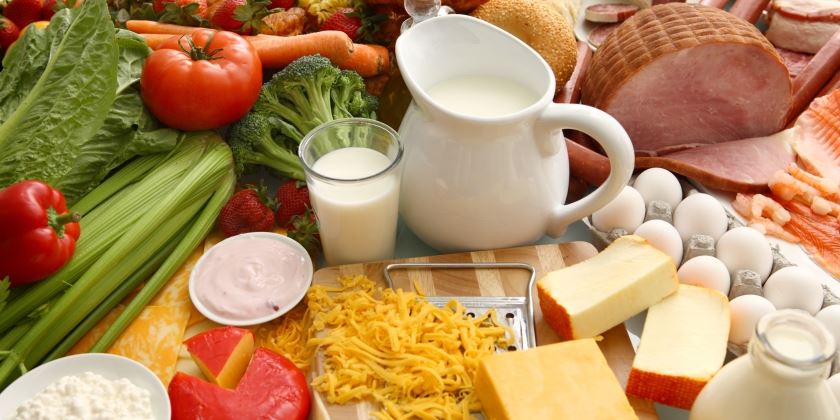
A gluten-free diet is the only treatment for coeliac disease. While the diet can be a prescription for health, wheat and gluten are ubiquitous ingredients in our food supply. Maintaining a gluten-free diet can be challenging and requires knowledge of ingredients, food preparation and label reading.
Gluten is a storage protein found in wheat, oats*, rye and barley. Individuals on a gluten-free diet can enjoy a variety of naturally gluten-free foods as well as many manufactured gluten-free products. There are many manufactured gluten-free products specially designed to meet the nutritional needs of the individual as well as provide a safe gluten-free substitute for their usual food preferences. Manufactured gluten-free foods should be labelled as gluten-free or carry a gluten-free symbol or certification. Careful label reading and avoidance of cross contamination is vital. Traces of gluten may be present in various food manufacturing ingredients including food additives, flavourings, fillers, binding agents, and some medications.
European Legislation (EU) No. 609/2013
Download: European Gluten Free Food Labelling Legislation: (EU) No. 609/2013
Gluten-free diet
| Food group | Foods allowed | Foods to check | Foods to avoid |
|---|---|---|---|
| Grains | Corn, rice, millet, buckwheat, quinoa, amaranth, tapioca, cassava, Gluten-free oats |
Convenience foods (e.g. mashed potatoes, rice mixes), crisps, breakfast cereals |
Wheat, barley, rye, spelled, triticale, spelled, kamut, green rye, bulgur, couscous, contaminated oats. Any breads, pasta, batters, cakes, pastries, crackers or biscuits, etc. made from these grains |
| Fruit | All fruits | Dried and candied fruits, smoothies, fruits in sauces | |
| Vegetables | All vegetables | Vegetables in sauces or gravies, dried vegetables, vegetarian convenience foods | Vegetables that have been breaded, coated in flour or batter, vegetables served with added seasonings or sauces |
| Dairy products | Milk (all types), cream, most yogurt, cheese, most ice cream | Flavored milks/shakes, yogurts/ice cream with toppings/added ingredients, processed cheese, cheese spreads, cheese sauces, ready-grated cheese | Malted milk drinks |
| Meat, fish, poultry, and eggs | All types of plain fresh or frozen meat or fish, poultry, eggs, pulses and lentils, peanut butter, plain nuts and seeds, plain tofu | Processed meats (sausages, burgers, luncheon meat, imitation fish products, meat substitutes, dried meat), meat served with sauces/ gravies, baked beans, seasoned or dry roasted nuts and seeds, flavored tofu, tempeh, miso | Meat fish or poultry in batter/bread crumbs |
| Fats, spices, sauces and baking ingredients | Vegetable oils, butter, margarine, lard, vinegar, pure spices, salt, pepper, herbs, all vinegar (including malt vinegar), Worcestershire sauces | Soy sauce, prepared mustards, seasoning mixes, baking sprays, tomato sauce, salad cream and dressings, chutney, gravy granules, curry powder, packet or jarred sauces. | Sauces thickened with wheat flour (e.g roux, Béchamel sauce) |
| Sweets and sweeteners | Honey, sugar (brown, white), agave, confectioners’ sugar, corn syrup, molasses, sugar substitutes, jam, jellies, marmalade | Chocolate and sweets | Licorice, ice cream wafers |
| Beverages | Soft drinks (e.g. cola and lemonade), coffee, tea, pure fruit and vegetable juice and juice drinks, distilled alcohol (bourbon, gin, rum, whisky) liqueurs, port, sherry, wine, gluten free beer/lager, cider | Hot chocolate mixes, cloudy fizzy drinks, coffee whitener | Beer, ale, stout, lager, barley water/squash, malted milk drinks |
*Oats
The prolamin found in oats (known as avenin) is not believed to be toxic to the majority of coeliac patients. However, there is a high risk that standard oat products may be contaminated with gluten and should be avoided. Current advice from the National Institute of Clinical Excellence [1] states that patients can choose to include gluten free oats in their diet at any stage and will be advised whether to continue eating gluten free oats depending on their immunological, clinical or histological response.
References
- NICE Guideline NG20: Recognition, Assessment & Management of Coeliac Disease. National Institute of Clinical Excellence 2015.
Further information on this topic
Presentations
6
Show all
Studies
1
Show all
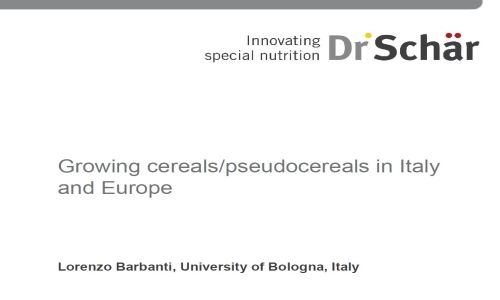
Growing cereals/pseudocereals in Italy and Europe (2013)
Lorenzo Barbanti
Assistant Professor
DipSA (Department of Agricultural Sciences)
University of Bologna, Italy
International Symposium "10 years of research in gluten-free food and future prospects", 30.11.2013, AREA Science Park, Trieste (Italy)
Assistant Professor
DipSA (Department of Agricultural Sciences)
University of Bologna, Italy
International Symposium "10 years of research in gluten-free food and future prospects", 30.11.2013, AREA Science Park, Trieste (Italy)
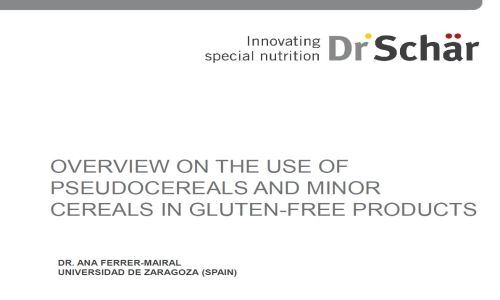
Overview on the use of pseudocereals and minor cereals in gluten - free products (2013)
Ana Ferrer-Mairal
Associate Professor in Food Technology
University of Zaragoza, Spain
International Symposium "10 years of research in gluten-free food and future prospects", 30.11.2013, AREA Science Park, Trieste (Italy)
Associate Professor in Food Technology
University of Zaragoza, Spain
International Symposium "10 years of research in gluten-free food and future prospects", 30.11.2013, AREA Science Park, Trieste (Italy)
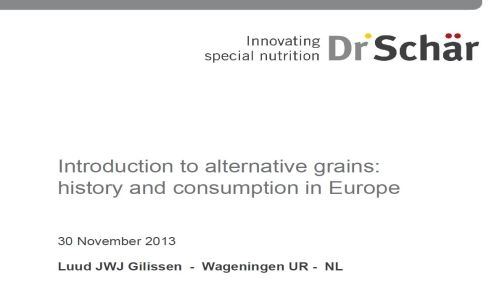
Introduction to alternative grains: history and consumption in Europe (2013)
Luud J.W.J. Gilissen
Senior scientist at Plant Research International (PRI) of Wageningen UR, The Netherlands
International Symposium "10 years of research in gluten-free food and future prospects", 30.11.2013, AREA Science Park, Trieste (Italy)
Senior scientist at Plant Research International (PRI) of Wageningen UR, The Netherlands
International Symposium "10 years of research in gluten-free food and future prospects", 30.11.2013, AREA Science Park, Trieste (Italy)
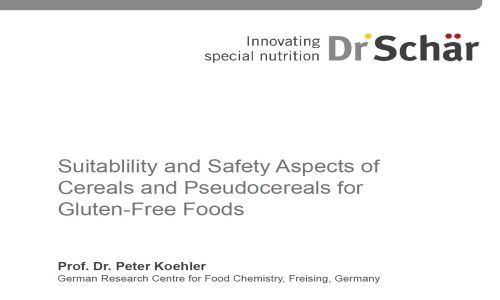
Suitability and safety aspects of cereals and pseudocereals for gluten-free foods (2013)
Peter Koehler
Professor for Food Chemistry
Technical University of Munich, Germany
Vice director of the German Research Centre for Food Chemistry
International Symposium "10 years of research in gluten-free food and future prospects", 30.11.2013, AREA Science Park, Trieste (Italy)
Professor for Food Chemistry
Technical University of Munich, Germany
Vice director of the German Research Centre for Food Chemistry
International Symposium "10 years of research in gluten-free food and future prospects", 30.11.2013, AREA Science Park, Trieste (Italy)
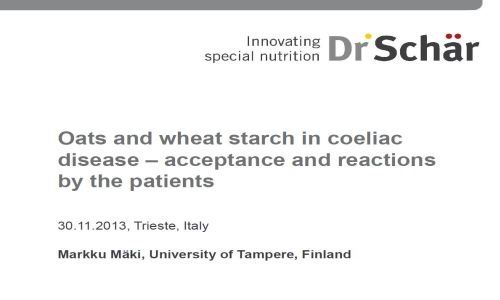
Oats and wheat starch in coeliac disease – acceptance and reactions by patients (2013)
Markku Mäki
Pediatric gastroenterologist and full Professor of Pediatrics at the University of Tampere, Finland
International Symposium "10 years of research in gluten-free food and future prospects", 30.11.2013, AREA Science Park, Trieste (Italy)
Pediatric gastroenterologist and full Professor of Pediatrics at the University of Tampere, Finland
International Symposium "10 years of research in gluten-free food and future prospects", 30.11.2013, AREA Science Park, Trieste (Italy)
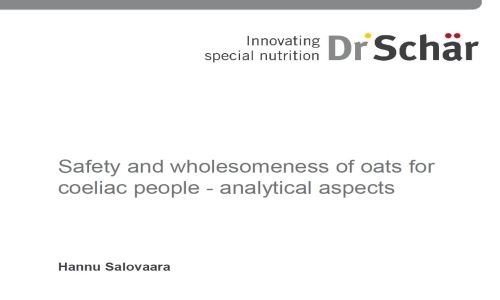
Safety and wholesomeness of oats for coeliac people - analytical aspects (2013)
Hannu Salovaara
Head of Food Technology division
Food and Environmental Sciences, University of Helsinki, Finland
International Symposium "10 years of research in gluten-free food and future prospects", 30.11.2013, AREA Science Park, Trieste (Italy)
Head of Food Technology division
Food and Environmental Sciences, University of Helsinki, Finland
International Symposium "10 years of research in gluten-free food and future prospects", 30.11.2013, AREA Science Park, Trieste (Italy)

Growing cereals/pseudocereals in Italy and Europe (2013)
Lorenzo Barbanti
Assistant Professor
DipSA (Department of Agricultur...

Overview on the use of pseudocereals and minor cereals in gluten - free products (2013)
Ana Ferrer-Mairal
Associate Professor in Food Technology
University ...

Introduction to alternative grains: history and consumption in Europe (2013)
Luud J.W.J. Gilissen
Senior scientist at Plant Research International...

Suitability and safety aspects of cereals and pseudocereals for gluten-free foods (2013)
Peter Koehler
Professor for Food Chemistry
Technical University of M...

Oats and wheat starch in coeliac disease – acceptance and reactions by patients (2013)
Markku Mäki
Pediatric gastroenterologist and full Professor of Pediat...

Safety and wholesomeness of oats for coeliac people - analytical aspects (2013)
Hannu Salovaara
Head of Food Technology division
Food and Environmen...
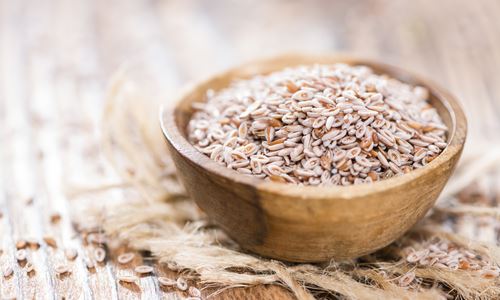
Psyllium as a substitute for gluten in pastas
Abstract
The aim of the present study was to evaluate the effect of replacing gluten in favor of psyllium in pasta’s characteristics. This study takes an exploratory and quantitative approach and was sub-divided into four steps: selection and development of recipes and chemical and sensorial analysis. Modified samples of the pasta presented 100.0% of acceptance for individuals with celiac disease and up to 94.0% for individuals without celiac disease. The most affected characteristics were odor and texture. In terms of chemical composition, reduction of energy value was 26.5% and of proportional fat was 85.4% before being cooked. Substituting wheat flour for a mixture of gluten-free flours with psyllium did not alter preference or acceptability of modified products in relation to standardized ones and amplified feeding options for celiac disease patients. Thus, there were no damages in sensorial characteristics of these products.
Resource: Journal of Culinary Science & Technology Volume 12, Issue 2, 2014
Renata Puppin Zandonadi, Raquel Braz Assunção Botelho and Wilma Maria Coelho Araújo
The aim of the present study was to evaluate the effect of replacing gluten in favor of psyllium in pasta’s characteristics. This study takes an exploratory and quantitative approach and was sub-divided into four steps: selection and development of recipes and chemical and sensorial analysis. Modified samples of the pasta presented 100.0% of acceptance for individuals with celiac disease and up to 94.0% for individuals without celiac disease. The most affected characteristics were odor and texture. In terms of chemical composition, reduction of energy value was 26.5% and of proportional fat was 85.4% before being cooked. Substituting wheat flour for a mixture of gluten-free flours with psyllium did not alter preference or acceptability of modified products in relation to standardized ones and amplified feeding options for celiac disease patients. Thus, there were no damages in sensorial characteristics of these products.
Resource: Journal of Culinary Science & Technology Volume 12, Issue 2, 2014
Renata Puppin Zandonadi, Raquel Braz Assunção Botelho and Wilma Maria Coelho Araújo

Psyllium as a substitute for gluten in pastas
Abstract
The aim of the present study was to evaluate the effect of...
www.drschaer-institute.com
